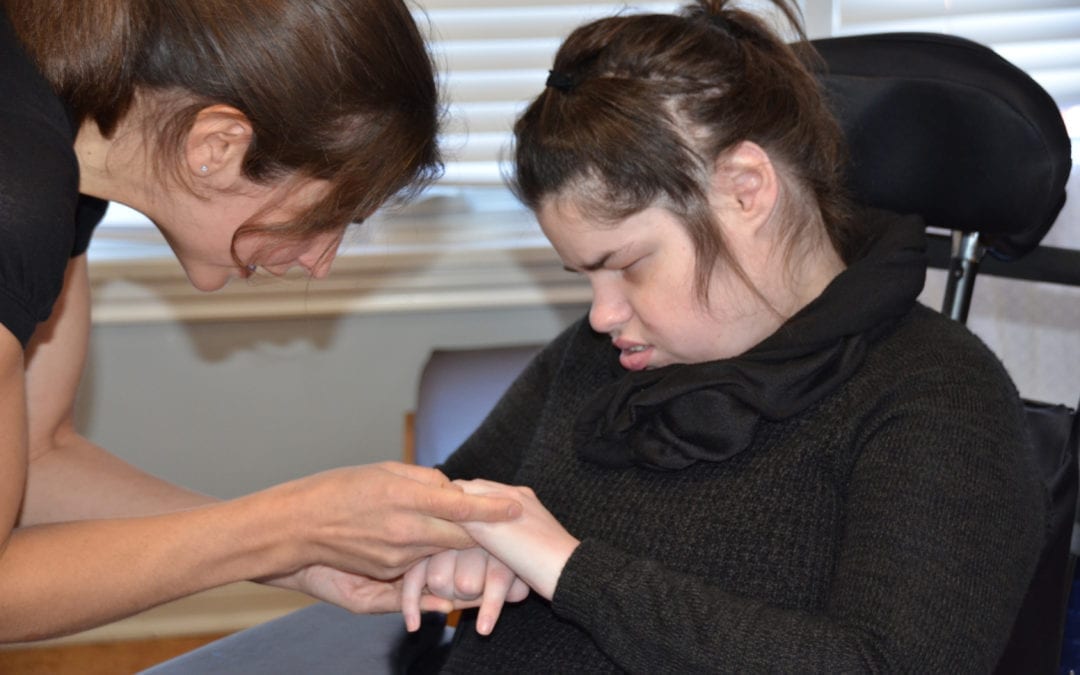For many Canadians, it can be difficult to imagine what it must be like to live with a combined loss of vision and hearing. For Amanda, this is the reality.
Born premature, Amanda has Cerebral Palsy along with profound hearing loss and very little vision. Although she has some perception of light in one eye, Amanda is deafblind.
Deafblindness combines varying degrees of both hearing and vision loss, making it unique to each individual and requiring specialized support. Over one percent of Canada’s population or approximately 466,420 people are deafblind.
As a child, Amanda’s Mother advocated for her to receive essential support through Intervenor Services. Canadians with deafblindness have inconsistent access to services like Intervenor Services or Support Service Providers, as there is no national standard for these vital resources.
Individuals with deafblindness have the capacity to build their life skills, gain independence and contribute to the greater community with the support of professional intervenors. “Working as an intervenor gives you the opportunity to be the “eyes” and “ears” for another person; bringing the world a little closer to them”, said Katherine an intervenor at DeafBlind Ontario Services.
After graduating, Amanda did not have access to an intervenor until she came to DeafBlind Ontario Services at age 22. Today, she has been with the organization for 10 years.
Amanda communicates expressively with the world around her through Signing Exact English (SEE), a system of manual communication that strives to be an exact representation of English vocabulary and grammar. She receives communication through Adapted Interactive Tactual Sign Language (AITSL). AISTL is hand-over-hand sign language, where the person ‘listening’ is feeling and reading the signs with their hands.
When Amanda started receiving Intervenor Services from DeafBlind Ontario Services, her expressive sign vocabulary was limited to two signs, “more” and “finish”. She only utilized these signs in the context of asking to continue or end an activity.
According to Katherine, “from the beginning, I could see the potential for growth in Amanda; her desire to learn and communicate was clear. I was confident that with the right tools and a flexible approach, she could achieve so much more independence with increased communication.”
Today, Amanda is able to communicate her choices and be a more active participant in her own life. She currently has an expressive sign vocabulary of 16 signs that is continuing to grow.
“A highlight of my career has been being part of Amanda’s journey. A lot of time, trial and error was dedicated to enhancing her range of communication; seeing it all come together was a huge moment for myself and our entire team.”
“We never lost sight of realizing Amanda’s full potential. When an individual’s potential is recognized, the possibilities are endless”, said Katherine.
People who are deafblind across Canada, like Amanda, have inconsistent access to support like Intervenor Services. Each province or territory has a varying degree of funding available to provide specialized services for people with deafblindness.
“Amanda is just one example of the difference that professional intervenors make for people with deafblindness. Access to Intervenor Services or Support Service Providers is a basic human right, regardless of where the individual lives”, said Roxanna Spruyt-Rocks, Chief Executive Officer at DeafBlind Ontario Services.
Throughout National Deafblind Awareness Month in June, members of the deafblind community are advocating for a level playing field for Intervenor Services across Canada.
National Deafblind Awareness Month was proclaimed by the Canadian Senate in 2015. It is held in June because it is the birth month of Helen Keller, one of the most internationally recognized people who lived with deafblindness.




Recent Comments